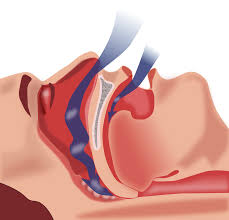Obstructive Sleep Apnea: New Findings

New findings reveal that untreated obstructive sleep apnea can significantly raise the likelihood of developing Parkinson’s disease.
- It is the most common sleep-related breathing disorder.
- People with OSA repeatedly stop and start breathing while they sleep.
- These breath pauses are known as apneas.
- There are several types of sleep apnea. OSA occurs when the throat muscles relax and block the airway.
- This happens off and on many times during sleep.
- Loud snoring is a telltale symptom of OSA. Anyone at any age can have OSA. But it’s most common in middle-aged and older adults.
- This condition has significant implications for cardiovascular health, mental well-being, quality of life, and driving safety.
- Treatment for OSA may include:
- Making lifestyle changes like sleeping position adjustments (not sleeping on your back) or maintaining a weight that’s healthy for you.
- Using a continuous positive airway pressure (CPAP) machine.
- Wearing oral appliances (mouthpieces).
- Undergoing surgery
- Parkinson’s Disease is a progressive neurodegenerative disorder that primarily affects movement.
- It causes nerve cells (neurons) in parts of the brain to weaken, become damaged, and die, leading to symptoms that include problems with movement, tremor, stiffness, and impaired balance.




